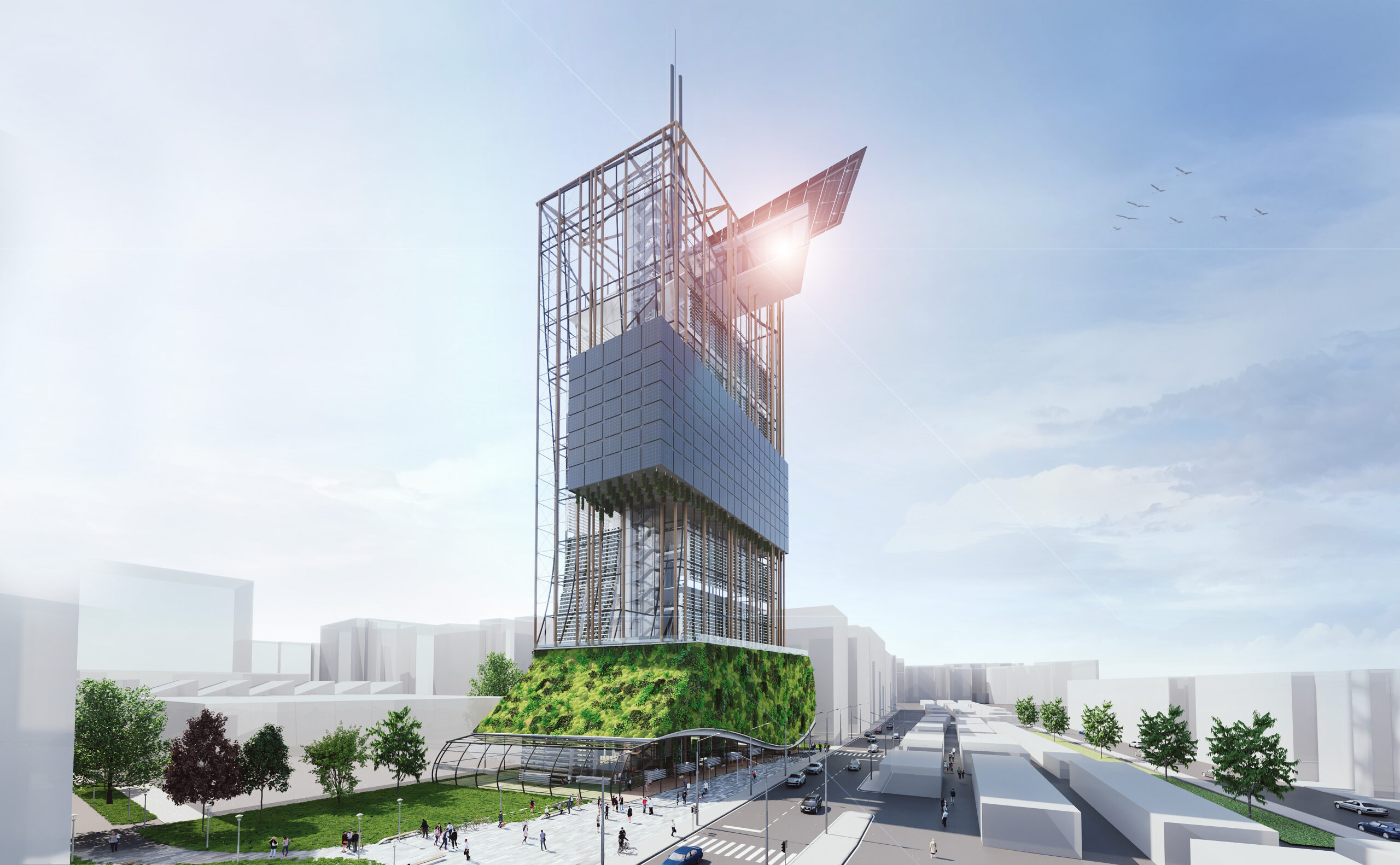Food production in the heart of the city
Designing and developing the city of the future needs a multidisciplinary collaboration. By now this challenge no longer can be applied only to architects or urban planners. The growing world population implies to rethink cities from scratch. The agricultural area which supplies the city with food actually expands ten-fold compared to the newly built up area.
Food supply therefore shifts in the center focus of the city of the future. This, though, can only be accomplished if we keep a holistic and integral view on the city of the future. Next to ecological, economic and social components the spatial integration of vertical farms is influenced by plant physiological and infrastructural requirements. Different expertises therefore have to be considered.

Intensive food production in the middle of the city creates potentials for the economy, for trade and the public life. Healthy organic produce will be sold on newly created market areas – next or in the vertical farm. Regional products are available all over the year. The vertical farm therefor can be seen as a magnet to relocate market- and trade spaces which directly or indirectly are connected to food production and food distribution within the city. The vertical farm, in the visual field of the urban population,
embodies a closed production chain from cultivation to distribution.
Food production will become part of metropolitan daily life.
Vertical farms already have been realized in numerous countries all around the globe. Technologies therefore are already in use, economic track records are speaking for themselves